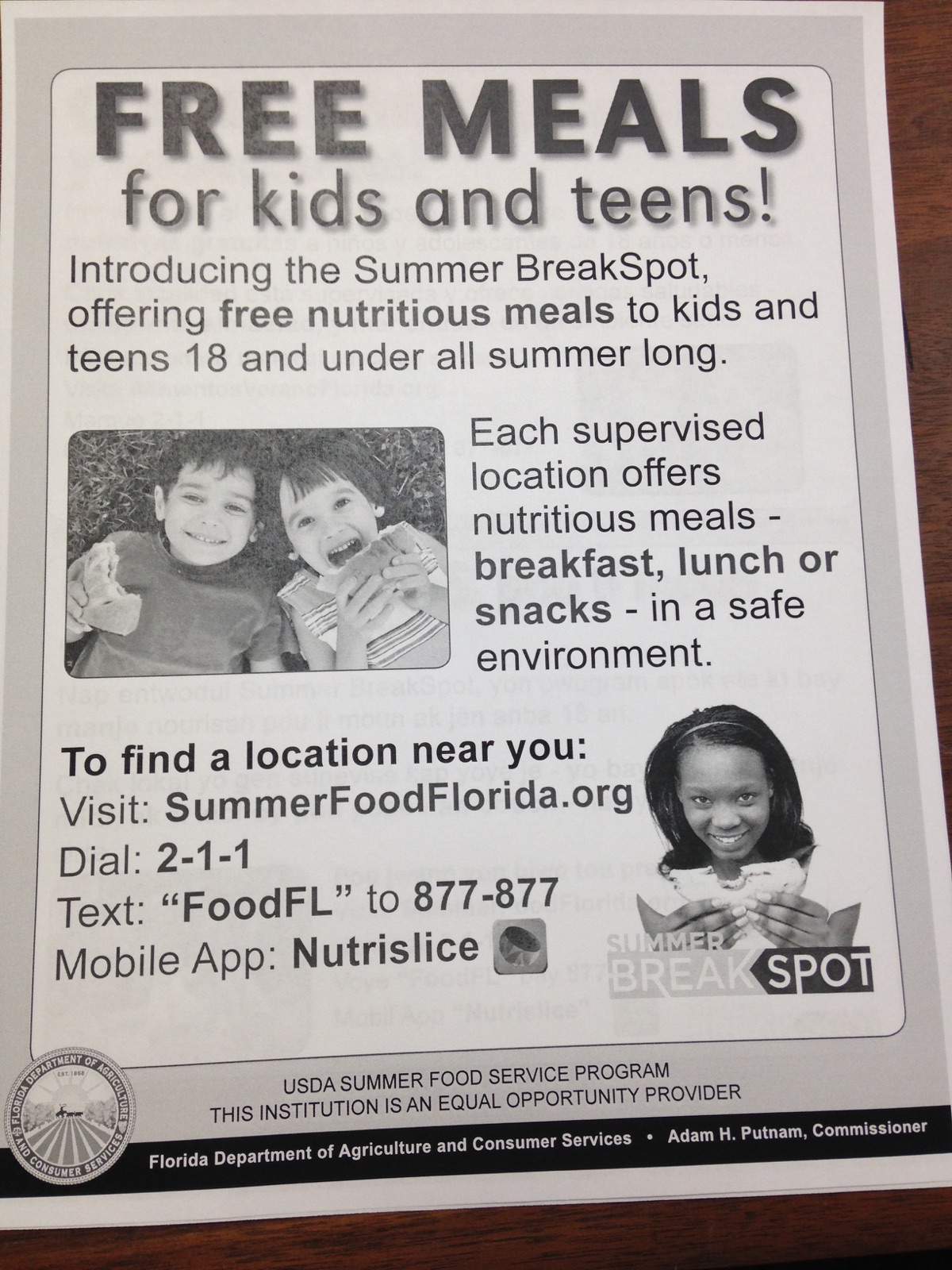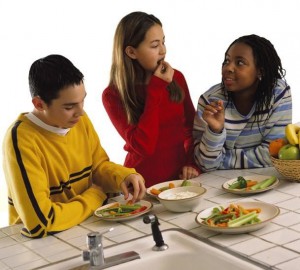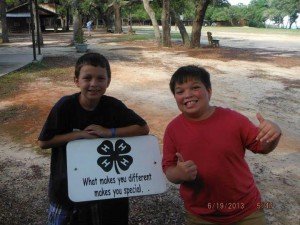
by Ginny Hinton | Jun 26, 2015

Photo Credit: Vicki Vargason
On June 20, 2015, a two-year-old boy in Bay County, Florida, drowned in his family’s above-ground pool after being able to get out of the house undetected. Drowning is a very real risk for young children, especially in Florida. Drowning is quick and silent. A child can drown in less than one minute in one inch of water. This year, there have been 39 drowning fatalities in Florida. Of those, 69% (24) have been children under three years of age.
In Florida, we love our beaches, pools, lakes, rivers, and creeks. How can we enjoy Florida’s beautiful water and still protect the ones we love? The answer is simple – but not necessarily easy. Injury prevention experts in Florida agree that the key to water safety is establishing layers of protection. There are three primary layers: Supervision, Barriers, and Emergency Protection.
First, establish a method of supervision and always have a responsible adult watching children who are near water. Even at a party where there are lots of adults available nearby, one should always be assigned as the “water watcher” to keep an eye on the kids.
Second, set up barriers that physically block children from entry to an unsupervised pool or body of water. Effective barriers include the following:
- Pool safety fencing with self-closing, self-latching gates
- Door, window, and pool alarms
- Childproof locks
- Professional pool cover or net (Note: Homemade pool covers may fail and actually trap children in water)
- Locking pet doors
Of course, YOU are always the most important layer of protection, but secondary barrier methods can literally save a life. The cost for setting up barriers can range from $20 to over $1,000. Experts advise that you purchase and use the most protection that you can afford.
The third layer is emergency preparedness. There is a small, precious window for resuscitating a child who is drowning – but only if someone knows what to do. It is a good idea for all adults, not just parents, to become CPR-certified in case of a water emergency. A phone should always be kept handy to call 911 in case something happens.
A 2007-2009 campaign called “Keep Your Eyes on the Kids” reduced the number of children ages one to four who drowned by 15% and the overall drowning rate by 18%. By taking a few important steps, we can do a lot to protect the little ones we love.
References: http://dcf.state.fl.us, http://drowningpreventionfoundation.com, http://nova.edu/ichp/drowning/, http://floridahealth.gov, http://waterproofFL.com, http://flsafepools.com

by Heidi Copeland | Jun 26, 2015

Summer Break Spot
With school out for the summer, many children may miss out on a meal they normally would receive through USDA’s school meals programs. Florida’s at-risk children now can have meals all summer long.
The Summer Break Spot Program, also known as the Summer Food Service Program, is federally funded under the U.S. Department of Agriculture (USDA) and, in Florida, administered by the Florida Department of Agriculture and Consumer Services. Summer Break Spot sites are locally operated by nonprofit organizations such as schools, community centers, recreation centers, and faith-based organizations.
There is no cost for these nutritionally balanced meals that meet USDA guidelines – breakfast, lunch and snack. However, the site may have a fee set for the activity program they provide. Plus, there is no application necessary and any child 18 or younger can simply show up during meal times to receive a meal.
Currently, Tallahassee has twenty listed Summer Break Spot sites. Sites will be added continually throughout the summer. Find a feeding site in your area using the interactive website. (http://www.summerfoodflorida.org/Find-a-Site or Dial: 2-1-1, Text:”FoodFL” to 877-877, Mobile App: Nutritslice
Have other questions? Contact the Program Director by email at Rachel.Mohler@FreshFromFlorida.com or by calling 1-800-504-6609.
If there are no feeding sites in your community, you can mobilize your community to sponsor the program. Contact the Program Director to learn how.
Let’s help insure that kids in our community don’t go hungry this summer.

by Heidi Copeland | Jun 5, 2015
 Rarely do I hear the phrase “school’s out” and not think of my own summers of fun and, of course, Alice Cooper’s 1972 major hit single “School’s Out for Summer” – does that age me?
Rarely do I hear the phrase “school’s out” and not think of my own summers of fun and, of course, Alice Cooper’s 1972 major hit single “School’s Out for Summer” – does that age me?
In fact, “word” has it that Alice Cooper said he was inspired to write the song when answering the question, “What are the greatest three minutes of your life?” Cooper said: “There are two times …The second one being “the last three minutes of the last day of school!”
Summer break is here and that may mean time for a big change to your daily routine. Even though summertime is fun, there still can be challenges for families who have to juggle and adjust!
The key is to plan ahead. Being prepared helps you enjoy the long days of summer. This is especially true when it comes to summer food. Kids associate summer with FUN. Much more fun can be had if you don’t have to spend time in the kitchen – cooking! (But that, too, can be enjoyable!)
Summer is an amazing time! There is an abundance of fresh, delicious, and healthy choices bursting with health benefits. Best yet, many of these foods do not even have to be cooked! With a general washing and perhaps a bit of slicing and dicing, many summer foods can be eaten without further preparation.
One of my favorites is watermelon! It’s like drinking your water and eating it, too! Watermelon helps keep you hydrated (watermelon is 92 percent water). Plus, one cup of diced watermelon contains 43 calories, 0 grams of fat, 2 grams of sodium, 11 grams of carbohydrate, and 1 gram of fiber. One cup of watermelon will provide 17% of vitamin A, 21% of vitamin C, 2% of iron, and 1% of calcium needs for the day. Watermelon also contains thiamin, riboflavin, niacin, vitamin B-6, folate, pantothenic acid, magnesium, phosphorus, potassium, zinc, copper, manganese, selenium, choline, lycopene, and betaine. And, according to the National Watermelon Promotion Board, watermelon contains more skin- protecting lycopene than any other fruit or vegetable (lycopene also gives watermelon its bright pink color). Research shows that eating foods that are full of water helps keep you satisfied on fewer calories.
Watermelon actually is considered a nutrient-dense food – it provides a high amount of vitamins, minerals, and antioxidants for a low number of calories.
But don’t stop at watermelon. The Florida Department of Agriculture and Consumer Services has a fantastic website promoting buying “Fresh From Florida.” In fact, their website devotes an entire section to “Fresh from Florida Foods.” This month, June, we have quite a bounty to be thankful for. Not only are the foods on this list nutritious, they are delicious and, for the most part, many require little preparation to be consumed (plus, food in season generally is less expensive and tastes better).
Print yourself a copy of What’s in Season Now and go have some summer fun!
Just in case you don’t have time to print the list, here is what is in season now….avocado, cantaloupe, eggplant, guava, lychee, mango, mushroom, orange, papaya, passion fruit, peanut, potato, sweet corn, tomato, and watermelon. Look for these foods at local farmers’ markets or in your supermarket’s produce section.
Enjoy the tastes of summer from the Sunshine State!
by Amy Mullins, PhD, RDN | May 28, 2015

Super Summer Snacking
Can you believe that the kids are almost out of school for the summer? With kids in the house all summer, get ready for those constant snack attacks, followed by “mom (or dad)…there’s nothing good to eat.”
Just because its summer break doesn’t mean we should take a vacation from healthy eating. Having easy and nutritious snacks on hand is important for keeping those growing appetites in check.
ChooseMyPlate.gov recommends using snacks to help children get the nutrients they need to grow and maintain a healthy weight, but to limit sweets and sugary beverages to reduce excess calories that could lead to an unhealthy weight.
Follow these great ideas for snacks that are sure to please this summer:
- Save time by slicing veggies. Store veggies in the refrigerator and have tasty dips ready-to-go, such as hummus or low-fat dips (or even yogurt or peanut butter).
- Mix it up. For older kids, mix dried fruit with unsalted nuts and popcorn to make a great homemade trail mix. Also try blending low-fat yogurt with 100% fruit juice and frozen fruit for a refreshing and nutritious smoothie.
- Fruits are quick and easy. Fresh, frozen, dried, or canned fruits can be easy options that need little preparation.
- Nibble on lean protein. Choose foods such as low-sodium deli meats and cheeses, unsalted nuts, or eggs. Try pairing deli meat with apple wedges in a whole wheat tortilla wrap.
Check out Snack Tips for Parents at http://www.choosemyplate.gov/food-groups/downloads/TenTips/DGTipsheet24MyPlateSnackTipsforParents.pdf for more great ideas and the 10 Tips Nutrition Education Series from ChooseMyPlate.gov for tips on a wide variety of nutrition and healthy lifestyle topics.
Amy Mullins is a Registered Dietitian and Family and Consumer Sciences Agent II with UF/IFAS Leon County Extension. If you have additional questions about nutrition, contact Amy at mullinsa@leoncountyfl.gov.

by Ricki McWilliams | May 18, 2015
 Beware of Hidden Dangers
Beware of Hidden Dangers
We all know that taking safety measures, such as using car seats correctly or basic childproofing, for our children is important. But what about “hidden dangers?” One major hidden danger can be the family vehicle. As summertime approaches and the heat is upon us, the dangers of leaving a child in a vehicle can be just as deadly as being involved in a traffic accident.
What’s the Danger?
While abduction may be the first concern that comes to mind when a child is left unattended in a vehicle, another concern is temperature. Outside temperatures ranging from 80 – 90 degrees can translate to temperatures of 120-140 degrees inside a vehicle (even with a window cracked). At such increased temperatures, children are at risk for heat stroke, high fever, dehydration, seizures, stroke, and even death. Even on a milder day (70 degrees), the inside of your car can reach temperatures over 100 degrees. While there may be several reasons a child is left in the vehicle unattended, the National Highway Traffic Safety Administration reports these as the top three:
- Infants and toddlers are simply forgotten in their car seat
- Toddlers or preschoolers sneak into the car to play and can’t get out
- Kids get trapped in the trunk
Heat Isn’t the Only Issue
The dangers of being left alone aren’t limited to a child overheating. Ever think about leaving the car running with the air conditioner on? Even if just for a few minutes, a child can be abducted, engage the transmission and drive off, get stuck in a power window, or press the power locks without knowing how to unlock the doors when you return. When wondering if it’s okay to leave you child in the car ~ just don’t do it.
Safety Tips to Keep Your Kids Safe:
- Don’t leave them in a car, which can quickly heat up, especially on a hot, sunny day
- Always lock your car and secure the keys so your kids can’t get to them
- Warn your kids about playing in the car by themselves without adult supervision
- Install a trunk release mechanism so they can’t get trapped in the trunk
- Get your kids out of the car first, and then worry about getting the groceries, etc., out of the car when you get home
- Make sure child care providers and day care workers have a plan to ensure kids aren’t left in the day care provider’s car or van
Deaths of children in hot cars*
- 2015: 2 (as of May 12, 2015)
- 2014: 30
- 2013: 43
- 2012: 34
- 2011: 33
- 2010: 49
Looking for a Child Passenger Safety Technician to complete a car seat check? Contact Ricki McWilliams, rickim@ufl.edu to find a technician in your area.
For more information on protecting children from other unintentional injuries click here.
Enjoy your summer and enjoy it safely!
*Source: Details are available at http://noheatstroke.org
by Monica Brinkley | May 13, 2015

With summer around the corner, it’s a great time to enroll your children in residential and/or day camps. For most communities there are a variety of camps offered. Camping experiences not only give children something to do, they are also great learning experiences.
Just as a garden or flowerbed requires critical elements like water, sunshine, space, and freedom from bugs to grow and to flourish, so do children. Similar to other living things, you need nourishing, supportive and protective environments where youth can grow to be healthy and contributing adults.
Each young person needs to:
Know they are cared about by others: Belonging
Feel and believe they are capable and successful: Mastery
Know they are able to influence people and events: Independence
Practice helping others: Generosity
Camps offer environments for growth, rich in the essential elements that support healthy development.
Very enthusiastic older youth and caring adults are the staff that lead the camps. Participating youth develop meaningful relationships with admired and trusted adults and older teens. New relationships begin as the campers share cabins and engage in camp activities. As a result of these experiences, the campers develop a sense of belonging as they realize that they are cared about by others.
During camp, youth develop many new skills. Camp teaches children to communicate, to work together as part of a team and to be a leader. Residential camps do this as the children learn to live in the same cabin and perform daily living chores. Leadership is developed by asking campers to fulfill responsibilities that may not be expected of them elsewhere. Additionally, sharing resources and attention helps foster teamwork and the desire to participate. Campers gain the sense of mastery as they become capable and successful at new skills.
There is a sense of adventure and challenge not usually found in daily home life. Most camps offer time for youth to test new ideas in a non-threatening environment. It pushes children out of their comfort zone and exposes them to new activities and experiences that they may not be familiar with. Many youth discover new hobbies or passions. By exploring various types of activities, children have a greater chance of finding something that they excel at or that makes them happy. Independence is gained as they are able to influence people and events.
Camp also provides many opportunities for youth to help fellow campers through daily chores of cleaning up cabins and dining hall, encouraging campers who may be homesick, cheering on their team, assisting camp staff, and so on. Our society needs for more people to gain the practice of helping others – that element of generosity.
Camp offers youth an opportunity to accept new responsibilities in leadership, conquer fears, practice new skills, and discover individual differences in an environment that reinforces the value of each person. These essential elements should be a focus of every camp. So as you seek camp opportunities for you children this summer, look for ones that feature these four essential elements. 4-H camping opportunities are available in every county in the state of Florida. Look them up and enroll your child today.









